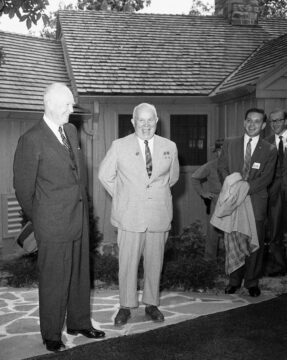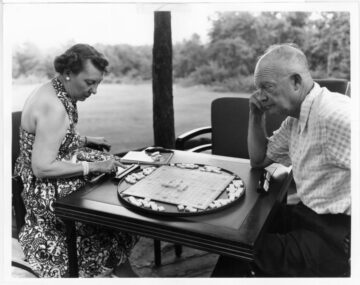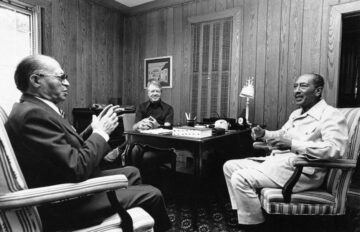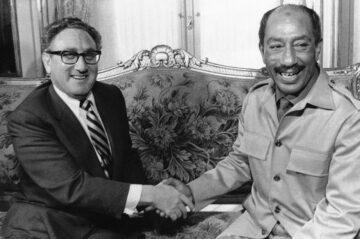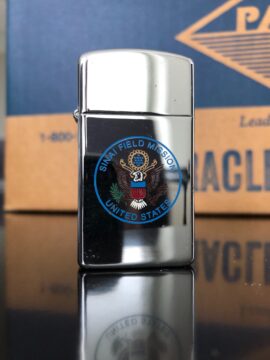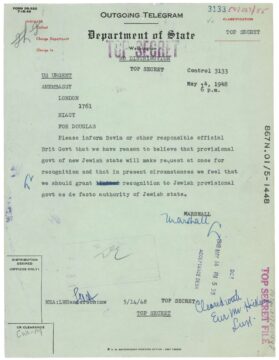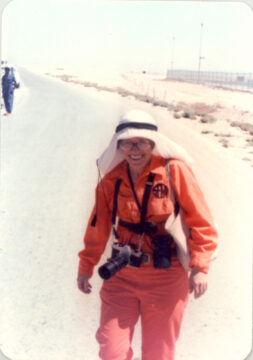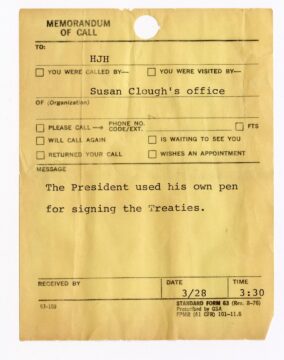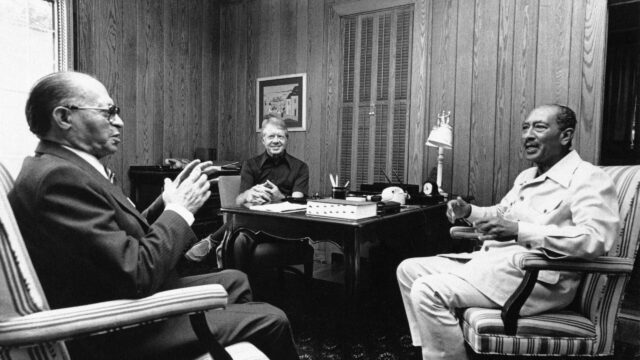
Camp David: Presidential Retreat and International Meeting Site

In response to the national security threat posed by World War II, President Franklin D. Roosevelt began using a retreat camp built for federal employees to conduct international diplomacy. Sixty miles from Washington, D.C. in Maryland’s Catoctin mountains, FDR named the camp “Shangri-La,” after the mythical paradise described in James Hilton’s popular 1933 novel, Lost Horizon.
After the war, Presidents Truman and Eisenhower continued the practice. Considering Shangri-La too “fancy for a Kansas farm boy,” Eisenhower renamed the site Camp David. It was the site of a historic 1959 meeting between Eisenhower and Soviet Premier Nikita Khrushchev. After the visit, Khrushchev coined the term, “the spirit of Camp David,” to refer to a friendly, informal agreement between nations.

The Camp David Accords: The Diplomacy of President Jimmy Carter
After the creation of Israel in 1948, three decades of Middle East instability followed. Under the Ford and Nixon administrations, Secretary of State Henry Kissinger brokered temporary peace. With those diplomatic advances, President Carter hoped to create a permanent peace treaty to prevent future hostilities.
In September 1978, Carter invited Egypt’s President Anwar Sadat and Israel’s Prime Minister Menachem Begin to the United States for peace negotiations.
Carter listened to the concerns of both sides and adopted a “single text” strategy, creating a draft agreement they worked on together. Each concession built trust. Carter also built trust by respecting the diplomats’ faiths. He converted the movie theater into a prayer room, which Sadat used for Friday Muslim prayers, Begin used for Saturday Jewish services, and Carter used for Sunday Christian services. After thirteen contentious days, all parties agreed to a peace treaty framework and signed it six months later.
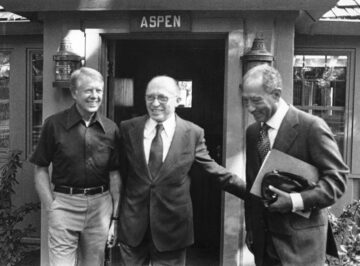
Carter encouraged Israeli Prime Minister Begin, left, and Egyptian President Sadat, right, to speak directly to each other on their second day of peace talks at Camp David in 1978. (AP Photo/Official White House Photo)

Tension in the Middle East
On May 14, 1948, the United States became the first nation to recognize the Jewish provisional government as the de facto authority of the independent State of Israel.
In the years that followed, diplomats sought to negotiate peace after several armed conflicts involving Israel and its Arab neighbors. In the 1970s, Secretary of State Henry Kissinger practiced shuttle diplomacy between Israel and Egypt to mediate contested territory Israel occupied after the 1973 Yom Kippur War.
In 1975, Kissinger brokered the Sinai II agreement establishing a buffer zone in the disputed Sinai peninsula, bringing temporary peace to the region.

From Peace Framework to Treaty
In March 1979, six months after all parties agreed to the Camp David peace treaty framework, Carter traveled to Israel and Egypt.
Addressing the Israeli and Egyptian legislatures, Carter sought to convey the importance of peace and advocated for a formal treaty. He said, “I am here for a cause of brotherhood and peace…and to demonstrate that the United States is determined to create lasting peace and friendship between Egypt and Israel.”
On March 26, 1979, Carter, Sadat, and Begin signed the historic treaty at the White House in Washington, D.C., normalizing relations between Egypt and Israel.
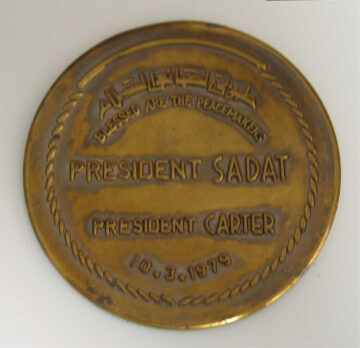
Medallion commemorating a meeting between President Carter and Anwar Sadat at the Hotel Mena House Oberoi, March 10, 1979, with inscription “Blessed are the peacemakers.” (Gift of Carol [Mrs. Harold H.] Saunders)
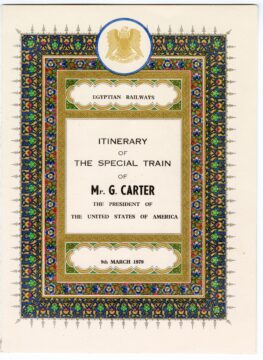
Cover of “Special Train of Mr. G. [sic] Carter ” from Hansell collection. (Original in NMAD collection; gift of the children of Herbert J. Hansell)

Photo from the signing ceremony; Herb Hansell, the Department of State’s Legal Advisor, standing behind and between President Carter and Anwar Sadat. (Collection of the National Museum of American Diplomacy)
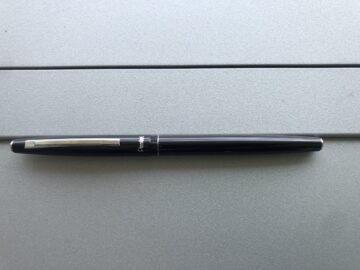
As chief Camp David Accords legal advisor to President Carter, Herb Hansell brought this “official” treaty signing pen to the ceremony. Carter surprised Hansell by breaking protocol in using his own pen. Carter’s executive secretary, Susan Clough, sent Hansell’s pen back to him accompanied with this memo. (Gift of the children of Herbert J. Hansell)
This exhibit is made possible by a generous donation from the Koret Foundation.
About the Spotlight
Throughout the year, the National Museum of American Diplomacy (NMAD) highlights different stories and artifacts of diplomacy through our rotating exhibit: Spotlight on Diplomacy.
This exhibit was temporarily on display at the 21st street entrance of the Harry S Truman Building. To allow more of the public to view these stories during the pandemic, this exhibit is also available here on our website for virtual viewing.

